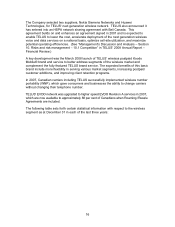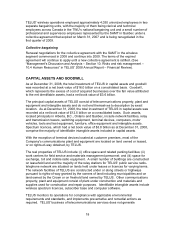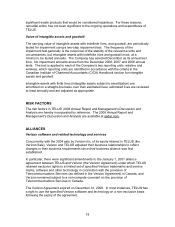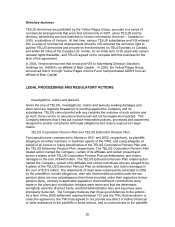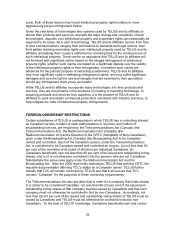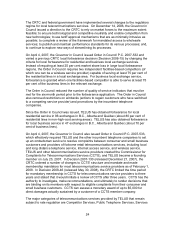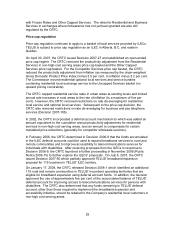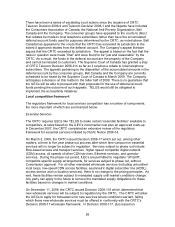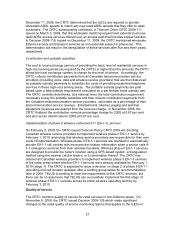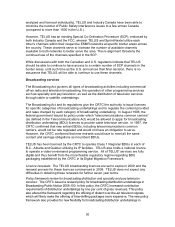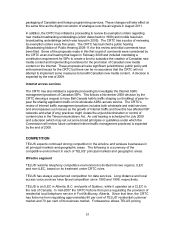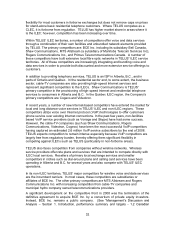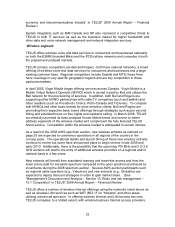Telus 2008 Annual Report Download - page 25
Download and view the complete annual report
Please find page 25 of the 2008 Telus annual report below. You can navigate through the pages in the report by either clicking on the pages listed below, or by using the keyword search tool below to find specific information within the annual report.with Frozen Rates and Other Capped Services. The rates for Residential and Business
Services in exchanges where forbearance has not yet been granted are also still
regulated by the CRTC.
Price cap regulation
Price cap regulation continues to apply to a basket of local services provided by ILECs.
TELUS is subject to price cap regulation as an ILEC in Alberta, B.C. and eastern
Québec.
On April 30, 2007, the CRTC issued Decision 2007-27 and established an open-ended
price cap regime. The CRTC removed the productivity adjustment from the Residential
Services in non-high-cost serving areas price cap basket and the Other Capped
Services price cap basket. For the Competitor Services price cap basket, the CRTC
reduced the productivity adjustment from inflation (as measured by the chain-weighted
Gross Domestic Product Price Index) minus 3.5 per cent, to inflation minus 3.2 per cent.
The Commission moved residential optional local services and service bundles
containing residential local exchange service to the Uncapped Services basket (no
upward pricing constraints).
The CRTC capped residential service rates in urban areas at existing levels and limited
annual rate increases in rural areas to the rate of inflation (to a maximum of five per
cent). However, the CRTC removed restrictions on rate de-averaging for residential
local service and optional local services. Subsequent to the price cap decision, the
CRTC also removed restrictions on rate de-averaging for business and pay telephone
services (Decision 2007-106).
In 2002, the CRTC incorporated a deferral account mechanism to which was added an
amount equivalent to the cumulative annual productivity adjustments for residential
services in non-high cost serving areas, less an amount to compensate for certain
mandated price reductions (generally for competitor wholesale services).
In February 2006, the CRTC determined in Decision 2006-9 that the funds accumulated
in the ILEC deferral accounts could be used to expand broadband services to rural and
remote communities and to improve accessibility to telecommunications services for
individuals with disabilities. After receiving proposals from the ILECs in response to
Decision 2006-9, the CRTC launched a further proceeding in November 2006 (Public
Notice 2006-15) to further explore the ILECs’ proposals. On July 6, 2007, the CRTC
issued Decision 2007-50 which partially approved TELUS’ broadband expansion
proposal for 115 locations in TELUS’ ILEC territory.
On January 17, 2008, the CRTC released Decision 2008-1 which identified an additional
119 rural and remote communities in TELUS’ incumbent operating territories that are
eligible for broadband expansion using deferral account funds. In addition, the decision
approved the use of approximately five per cent of the accumulated balance of TELUS’
deferral account for improving access to telecommunications services for persons with
disabilities. The CRTC also determined that any funds remaining in TELUS’ deferral
account, other than those required to implement the broadband expansion and
accessibility initiative, should be rebated to the Company’s residential local customers in
non-high cost serving areas.
25



